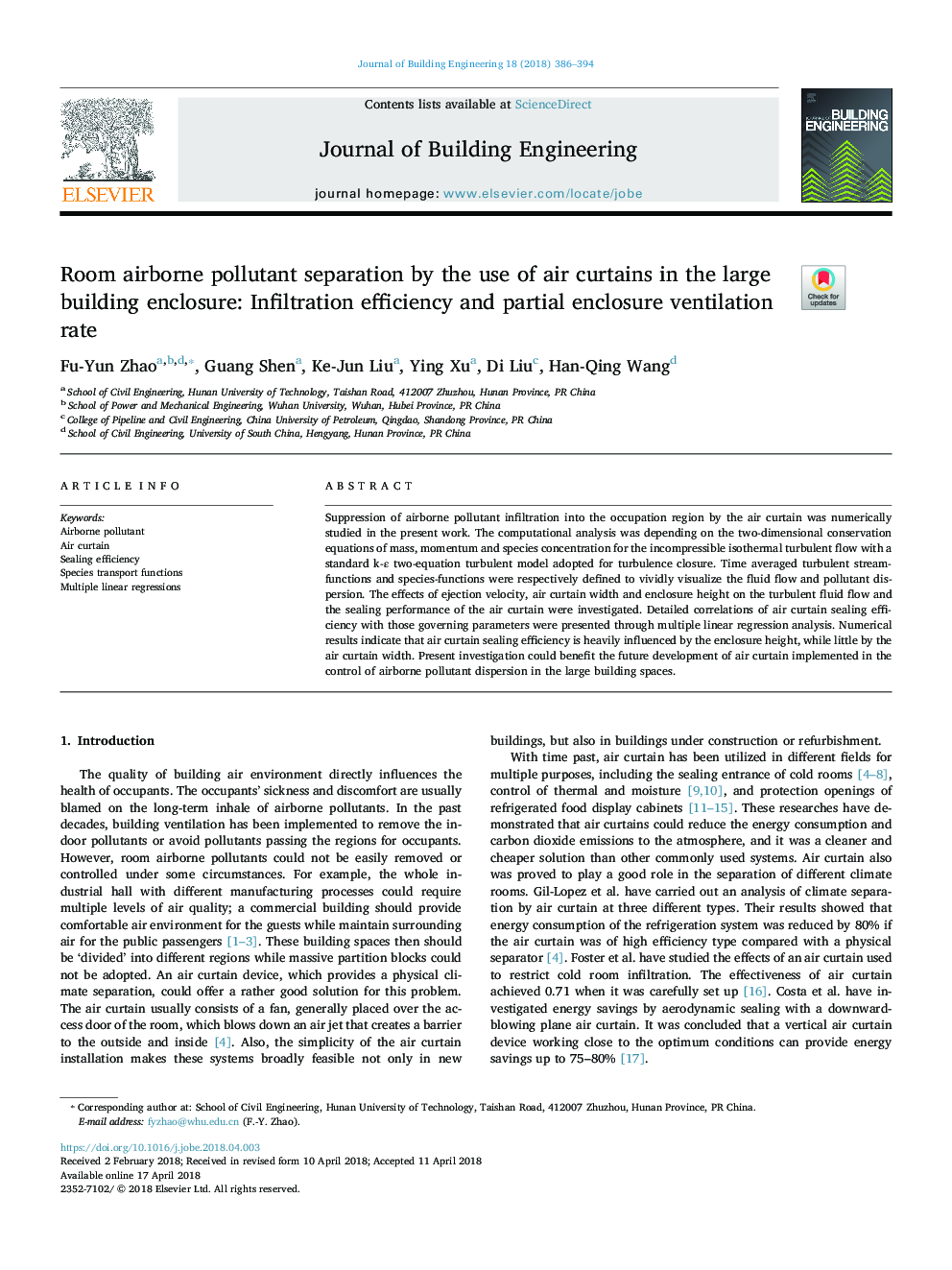| Article ID | Journal | Published Year | Pages | File Type |
|---|---|---|---|---|
| 6749910 | Journal of Building Engineering | 2018 | 9 Pages |
Abstract
Suppression of airborne pollutant infiltration into the occupation region by the air curtain was numerically studied in the present work. The computational analysis was depending on the two-dimensional conservation equations of mass, momentum and species concentration for the incompressible isothermal turbulent flow with a standard k-ε two-equation turbulent model adopted for turbulence closure. Time averaged turbulent stream-functions and species-functions were respectively defined to vividly visualize the fluid flow and pollutant dispersion. The effects of ejection velocity, air curtain width and enclosure height on the turbulent fluid flow and the sealing performance of the air curtain were investigated. Detailed correlations of air curtain sealing efficiency with those governing parameters were presented through multiple linear regression analysis. Numerical results indicate that air curtain sealing efficiency is heavily influenced by the enclosure height, while little by the air curtain width. Present investigation could benefit the future development of air curtain implemented in the control of airborne pollutant dispersion in the large building spaces.
Related Topics
Physical Sciences and Engineering
Engineering
Civil and Structural Engineering
Authors
Fu-Yun Zhao, Guang Shen, Ke-Jun Liu, Ying Xu, Di Liu, Han-Qing Wang,
